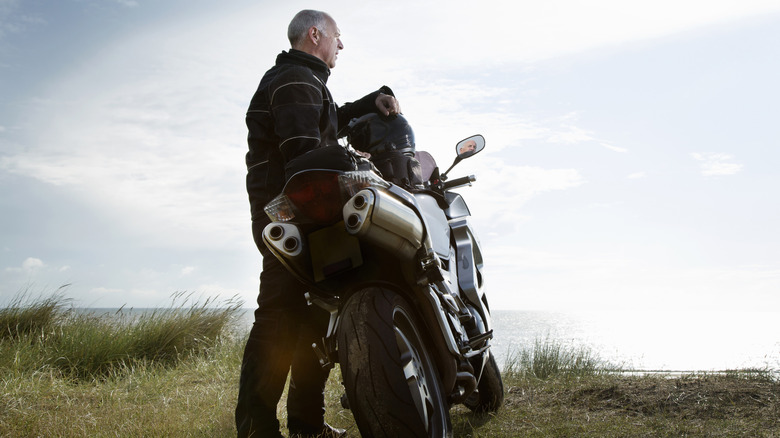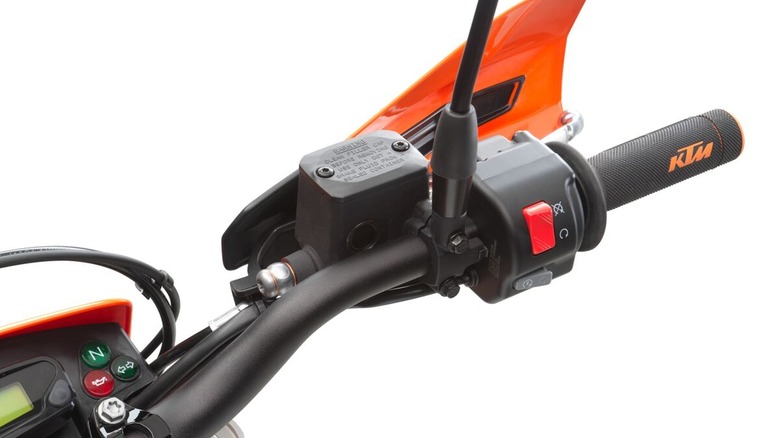What Is A Motorcycle Kill Switch & What Happens If You Hit It While Riding?
From the first motorized bike built in 1885 to now, motorcycles have become a massive part of the transportation industry. According to Riders Share, there were over 600 million motorcycles registered around the world as of February 2023. By comparison, Riders Share said that there were 1.4 billion cars registered on the planet during the same period.
Despite the fact that motorcycles are one of the best-selling vehicles in the world today, there is an inherent risk to riding one. Even seasoned motorcycle riders can make common mistakes when it comes to crash prevention and protection. According to a 2023 report (PDF) from the European Commission, 94% of all fatalities involving motorcycle and moped crashes were the riders of the motorcycles and mopeds. Additionally, motorcyclists represented more than 380,000 deaths worldwide, according to a 2019 study posted on ResearchGate.
Due to the danger associated with driving a motorcycle, manufacturers needed to create fail-safes in order to provide their riders with extra protection. Thankfully, they were able to come up with the kill switch. And while this safety feature is intended to cut off a motorcycle engine's power, using a kill switch while riding a motorcycle in motion is ill-advised.
What is a motorcycle kill switch?
Simply put, a motorcycle kill switch is a safety feature designed to cut off an engine's power instantly. It stops the motorcycle's combustion process by interrupting the electrical circuit's connection to the ignition system, instantaneously shutting the bike down without doing any harm to its engine.
Usually, riders can just turn off the engine by using an ignition key. However, the ignition key is not always in the easiest place to reach. Even if it is, the split-second reaction time required in emergency situations makes it dangerous to rely solely on an ignition key to power down a motorcycle. That's where the kill switch comes into play. The kill switch button is usually located within a thumb's reach on the handlebars, making it much easier to access and operate than a traditional ignition key. Rather than having to lift their hand off the handlebars, riders can just press a button by moving their thumb a few inches.
When the kill switch was first introduced for motorcycles, it was not considered an industry standard. But with the rise of electric ignition bikes in the 1970s and 1980s, kill switches became a standard safety element on motorcycles. In fact, almost all motorcycles produced since the '80s come with a kill switch.
What happens if you hit the kill switch while riding a motorcycle?
There are certain times and places when a kill switch should be used. For example, it is not recommended to use the kill switch while a motorcycle is moving at a high speed. Pressing the kill switch button will immediately shut off the engine, causing the bike to lose power. This power loss will force the motorcycle to abruptly slow down, which can lead to the rider losing control of the bike, especially if they're not prepared for a sudden deceleration. That's why it's important for riders to wear the proper motorcycle accessories to help protect them in case of a crash.
So, the kill switch button should be reserved for emergency situations, like during a crash or if the motorcycle is experiencing a mechanical failure. In these moments, it is best to use the kill switch as a way to instantly shut down the bike's engine to prevent further injury or the motorcycle from overheating. Unfortunately, motorcyclists are sometimes forced to use their kill switch when they're riding their bike at a high speed. For example, if an accelerator cable snaps and the throttle stops responding, then the kill switch button is the only thing that will power down the bike.
The hope is that motorists will never have to use the kill switch button so long as they drive responsibly. But, just in case, the kill switch is there for their protection.


